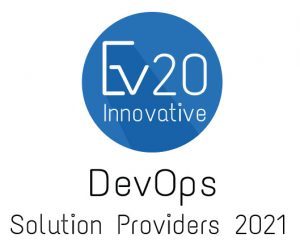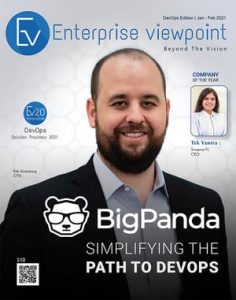
Organizations that remain competitive are the ones that are ready to adapt quickly, or in other words transition toward a DevOps operational model. DevOps essentially means that instead of a centralized IT operations group, software developers are entitled for operating the applications they develop. To bridge this gap BigPanda was founded with a vision for enabling companies to pursue fully autonomous IT operations. Elik Eizenberg, co-founder of BigPanda, explains, “In my experience, the path to DevOps is a challenging one for most enterprises, but it can also be immensely rewarding. The right mindset around transparency, tooling and personalization can get you far.”
He adds” In my past, I have led a development team and later made the transition to lead an IT operations department. This can’t be overstated: The difference between these two environments is night and day. Getting to a point where application developers can truly own the operation of their applications and start thinking about it as IT operations people do is a very big shift. At this point, I realized why many companies are struggling to get there and why it takes a long time to do so.”
Leaving behind the legacy
Many developers focus on the code—the heart of any application. Developer’s open their code editor, author the code, compile it and then test it. Once a version of the application is ready, they package the code and hand it over to IT operations to deploy and maintain it. This is the basic outline of a traditional development process.
Of course, there is a huge set of other factors that surround the code, as well as the coding. The process begins by running the code in an operating system that is often hosted in a virtual machine (VM). The VM typically runs in a physical server which is connected to network and storage devices which in turn is connected with a data center. This complexity creates a large component footprint that can affect the performance and uptime of an application just as much as its code does.
Another important aspect that affects the performance is how the code is delivered to production on an ongoing basis and how to make sure changes happen with little or no downtime or disruption for users?
For most organizations, this is a complex process involving many moving parts. Going back to the idea of developers not only owning the application code but also operating it, we must understand that they first need to break free from the traditional model where they are somewhat cushioned as if in a bubble of imagination and comfort. To move to the DevOps model, they need to burst that bubble and expand their scope. Developers need to be aware of all the moving parts in this ecosystem that surrounds their codebase and changes they make to it.
An era of customization
It starts with transparency. To start thinking about this full ecosystem, IT Ops, NOC, DevOps and SRE teams need to see a consolidated view of signals generated across many different tiers of the stack,including the network, cloud and storage infrastructure. According to Elik, “Leaders should start by ensuring there is one tool that consolidates all monitoring data across the stack and requiring that developers have full access to that tool. Revealing to developers the entire ecosystem in which their code runs can quickly burst the ‘developer bubble’.”
Another key aspect is the fact that most developers are tools-driven. For DevOps, this means tools that enable on-call rotation, CI/CD, real-time chat and event management. The sooner the developers equip with the right tools to support a DevOps model, the easier an organization’s journey will be.
Elik explains, “My team works with one of the largest SaaS vendors in the world. Initially, it implemented event management just for its NOC, with 30 people using the tool. When the enterprise shifted toward a DevOps model, it started creating dedicated dashboards for application teams to give them access to all the alerts, topology and change data from across the stack. The teams enjoyed getting visibility to all of this data, especially since it was already normalized into a consistent language and correlated to reduce noise. Eighteen months later, that company had more than 900 employees using the tool regularly.”
And last but not the least thing to consider is personalization. Centralized IT operations teams have a horizontal view of an organization’s infrastructure. As a result, they see operational data across different teams and business units. This means, they must track hundreds of thousands of different events and signals on a daily basis. In contrast, a single development team only cares about the part of the infrastructure that affects their applications. They need a verticalized view that concentrates on specific business services but does so across all layers of the stack.
Though embracing DevOps is not as simple as it seems, the results are much rewarding. What you really need is a mind set to accept and align with the changes that can drive you to the rapid pace of modern development.
Big Panda
Management:
CTO- Elik Eizenberg
Description:
BigPanda helps businesses prevent and resolve IT outages with their platform for Event Correlation and Automation, powered by AIOps. Without BigPanda, IT Ops and DevOps teams struggle with manual and reactive incident response capabilities that are badly suited for the scale, complexity and velocity of modern IT environments. This results in painful outages, unhappy customers, growing IT headcount and the inability to focus on innovation.











